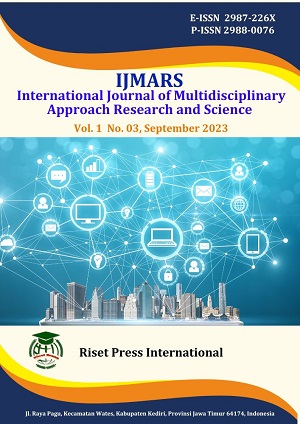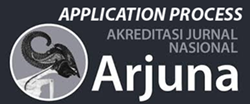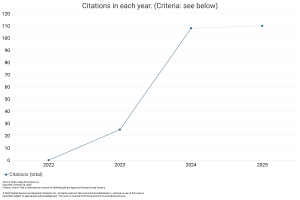Solidarity-Based Content Sharing on Social Media: A Closer Look at the Language Style among Millennial Social Platform Users
DOI:
https://doi.org/10.59653/ijmars.v2i01.334Keywords:
Language style, Solidarity Expression, social media contentAbstract
Social Media platforms have shaped diverse linguistic issues through informal language use, language adaptation and change, linguistic creativity and global communication. The current study reveals the issues about investigating about language style and linguistic form of solidarity expression used by the millennial community on social media platforms. Thirty respondents who aged about 23-43 years old considered as millennial participated in this study and inquired through open-ended questionnaire. The data was probed by using grounded theory proposed by Creswell. The findings exposed that language style were realized for certain communication purposes and based-social context oriented, solidarity expression was shown through a different linguistic form to reveal ideas, feeling, empathy, caring, respect, moral justice and kinds of arguments. after deeply investigated, there were four types of language styles that are dominantly used by millennial on this social media platform, namely formal language style, informal language style, slang language style and colloquial language style, unfortunately, many people abuse social media as a platform for venting their anger and their disappointment by using disrespectful language and behaviors are frequently observed online. Consequently, this scholarly paper also provides advice on the user of social media platform must possess a range of skills including linguistic knowledge, sociocultural knowledge, and the ability to use language in appropriate ways depending on the specific communicative context.
Downloads
References
Alozie, Michael. 2019, The Social Media and Language Use: The Case of Facebook.
Amal, B. K., Rambe, T., Ampera, D., Purba, A. S., Ridho, H., & Daud, D. (2022). Parents' perceptions of children's education and parents' attitudes towards the education of fishermen's children. Jurnal Pendidikan, Sains Sosial, dan Agama, 8(1), 85-97.
Ampera, D., Hufad, A., Amal, B. K., Purba, A. S., & Arqam, M. L. (2020). Memorization Learning Outcomes Of Vocational High School Students In Learning Basic Patterns. International Journal of Advanced Science and Technology, 29(06), 1104-1111.
Amin, Z., Burhanuddin, B., Shadiq, T. F., & Purba, A. S. (2021). How The Choice of Academic Majors and Students' Future Achievements According to The Talent Path. Nazhruna: Jurnal Pendidikan Islam, 4(3), 672-684.
Chaika, Elaine. (1982). Language The Society Mirror. Rewley Massachussets: New House Publisher Inc.
Chaer and Agustina. 2004. Sosiolinguistik: Perkenalan Awal. Jakarta: Rineka Cipta. P
Ducrot and Todorov. 1993. Introduction to Language Style. London. Cambridge University
E. Durkheim, The division of labor in society: A study of the organization of higher societies (Paris: Les Presses Universitaires de France, 1983)
Esteron, Maria Angela S. (2021). Different Language Usage on Social Media. International Journal of Advanced Engineering, Management and Science (IJAEMS),ISSN:2454-1311,Vol-7,Issue-3. https://doi.org/10.22161/ijaems
Hazen, K. (2017). Language Variation: Sociolinguistic Variationist Analysis. The Handbook of Linguistics, 519–540. doi:10.1002/9781119072256.ch25
Hsieh, H.F., and Shannon, S.E. (2005) Three approaches to qualitative content analysis. Qualitative Health Research, 15 (9), 1277 – 1288. https://doi.org/10.1177/1049732305276687
Howard, Jackson and Peter Stockwell. 2011. An Introduction to the Nature and Function of Language, Second Edition. New York: Continuum International Publishing Group. p.142.
Ingtyas, F. T. (2021). Development of" Product Design" Learning Based On Kkni through Creative Industry Students. Review Of International Geographical Education, 11(3), 998-1007.
Ingtias, F. T., Ampera, D., Farihah, F., Amal, B. K., & Purba, A. S. (2022). Implementation of Teaching Practitioners In Improving The Quality of Learning and Implementing The Curriculum Merdeka Belajar. Jurnal Studi Guru dan Pembelajaran, 5(2), 157-169.
Joos, Martin.(1976). The Styles of Five O’clock. Winthrop Publishers, Massachusetts
Kaifi, B. A., Nafei, W. A., Khanfar, N. M., & Kaifi, M. M. (2012). A Multi-Generational Workforce: Managing and Understanding Millennials. International Journal of Business and Management,7(24). https://doi.org/10.5539/ijbm.v7n24p88
Kim, W., et al.(2010). On social Web sites. Information Systems, 35(2), 215–236. http://doi.org/10.1016/j.is.2009.08.003
Mandell and Kirzsner.(2003). Analysis of Language Style.Winthrop Publishers.
Miles, M. B., & A, M. (2014). Qualitative Data Analysis. Los Angeles: SAGE Publications, Inc. https://www.researchgate.net/publication/272566756_Qualitative_Data_Analysis_A_Methods_Sourcebook
Muvid, M. B., Kisworo, A. Y., Septiawan, Y., PS, A. M. B. K., & Purba, A. S. (2023). Integration of Discovery Learning and Active Learning Methods in Shaping Students' Critical, Creative and Innovative Culture. Remittances Review, 8(4).
Nov, O., Naaman, M., & Ye, C. (2010). Analysis of participation in an online photo sharing community: A multidimensional perspective. Journal of the American Society for Information Science and Technology, 61(3), 555–566.
Natsir, M., Purba, A. S., Ellyana, E., Saragih, A. T., & Amal, B. K. (2022). English Teaching in an Indonesian Vocational High School Majoring Industrial Machinery Engineering. Al-Ishlah: Jurnal Pendidikan, 14(2), 1743-1754.
Purba, A. S., Hufad, A., & Sutarni, N. (2019). Women’s entrepreneurial literacy and their business competitiveness. In Research for Social Justice (pp. 163-168). Routledge.
Purba, A. S., Ramdani, A. M., & Taufika, R. (2018). Eksistensi Bahasa Melayu Dan Budaya Jamu Laut. Bahasa Xi, 39.
Spolsky, B., 2010, Sociolinguistics, Oxford: Oxford University press. https://escholarship.org/uc/item/0183q4ww
Syafrizal, S., Purba, A. S., & Corry, C. (2022). Changes in Cultural Assimilation in Harmonization of Children's Social Relations. Randwick International of Social Science Journal, 3(3), 620-633.
Supsiolani, S., Ekomila, S., Saputra, H., Agusti, I. S., Purba, A. S., Amal, B. K., & Arkam, M. L. (2022). Dynamics of family resilience of scavengers in the fulfillment of child welfare. Jurnal Pendidikan, Sains Sosial, dan Agama, 8(1), 162-178.
Trudgill, P. (1974). The Social Differentiation of English in Norwich (Cambridge: Cambridge University Press) pp. 90-5. https://doi.org/10.1007/978-1-349-25582-5_15
Wardhaugh, Ronald. 2006. An Introduction of Sociolinguistics. New York: Blackwell Publishing.
Downloads
Published
How to Cite
Issue
Section
Categories
License
Copyright (c) 2023 Mandra Saragih, Yola Ayudi Aisyaroh

This work is licensed under a Creative Commons Attribution-ShareAlike 4.0 International License.
Authors who publish with this journal agree to the following terms:
- Authors retain copyright and grant the journal right of first publication with the work simultaneously licensed under a Creative Commons Attribution-ShareAlike that allows others to share the work with an acknowledgement of the work's authorship and initial publication in this journal.
- Authors are able to enter into separate, additional contractual arrangements for the non-exclusive distribution of the journal's published version of the work (e.g., post it to an institutional repository or publish it in a book), with an acknowledgement of its initial publication in this journal.
- Authors are permitted and encouraged to post their work online (e.g., in institutional repositories or on their website) prior to and during the submission process, as it can lead to productive exchanges, as well as earlier and greater citation of published work (See The Effect of Open Access).
























